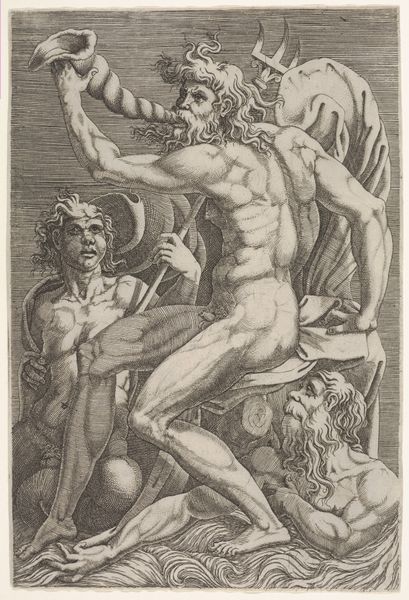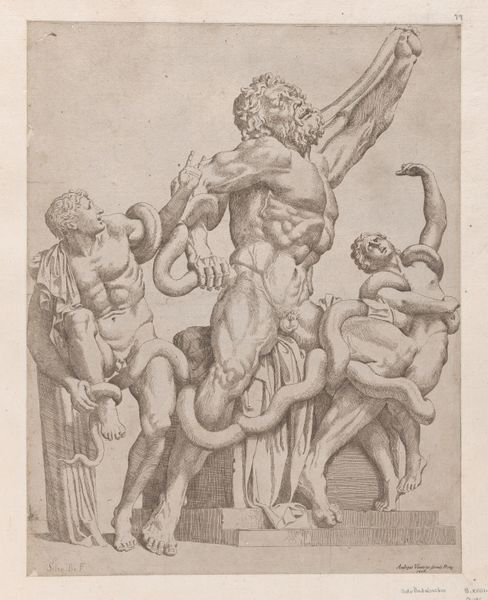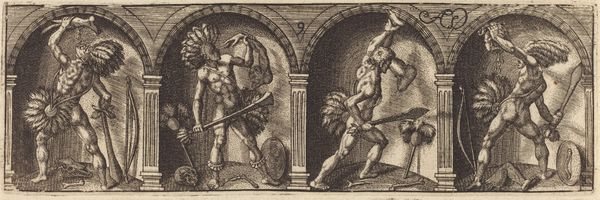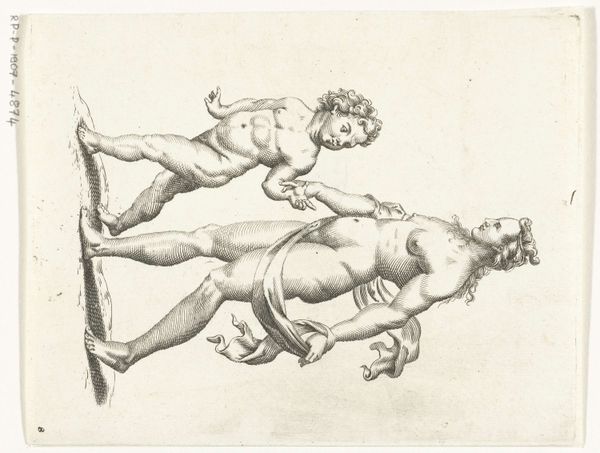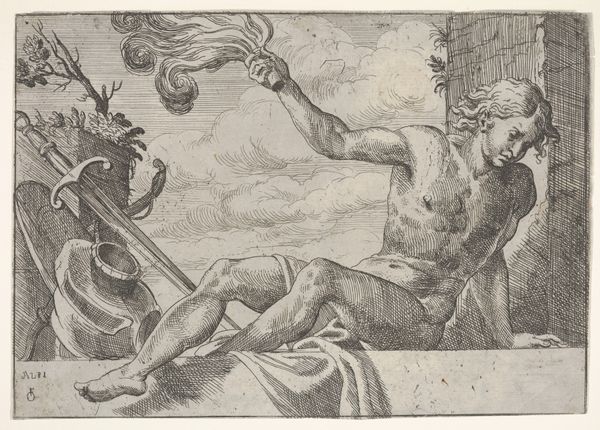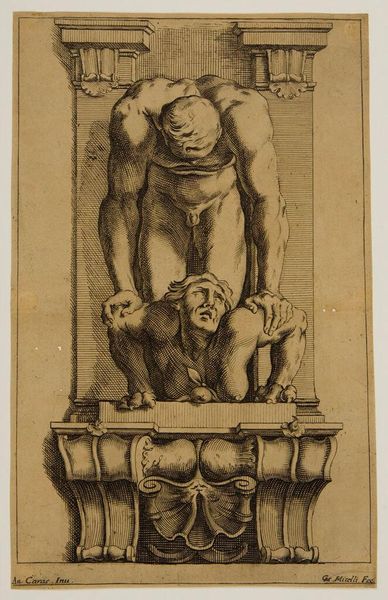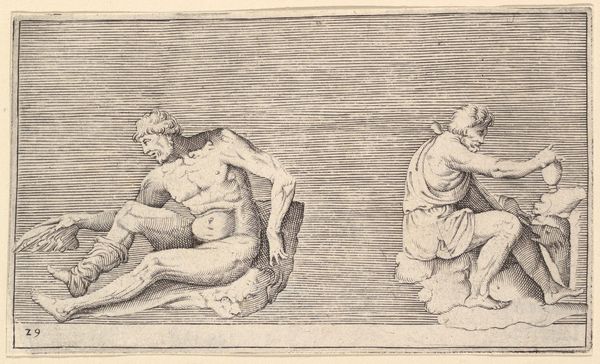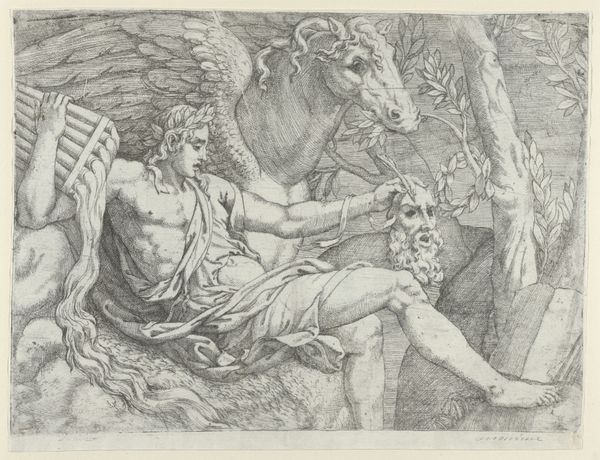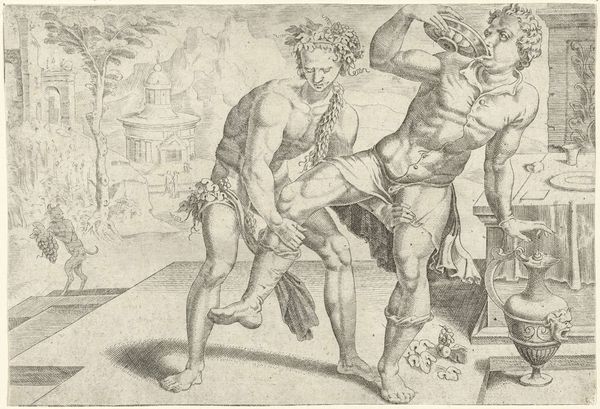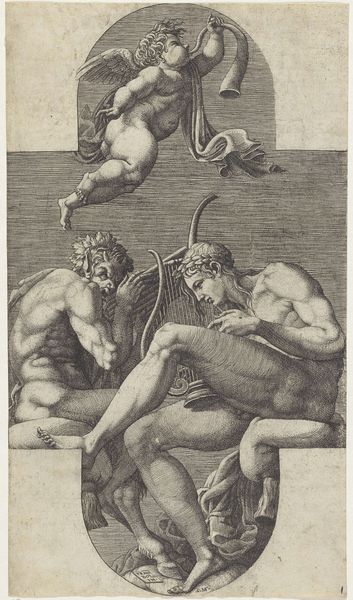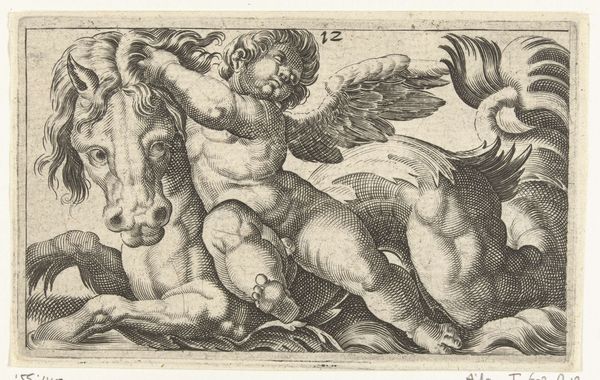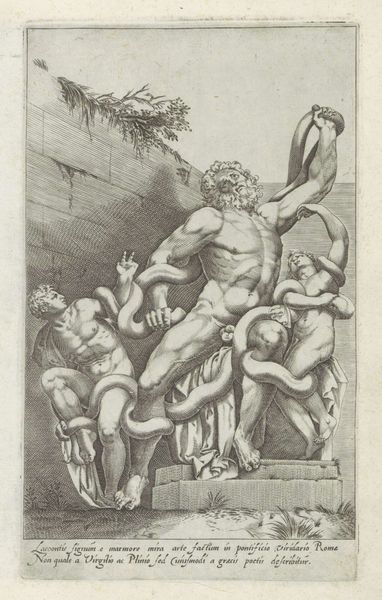
drawing, print, engraving
#
drawing
# print
#
figuration
#
11_renaissance
#
italian-renaissance
#
nude
#
engraving
Dimensions: sheet: 3 1/4 x 15 1/4 in. (8.3 x 38.7 cm)
Copyright: Public Domain
Curator: Today we're looking at "Two Groups of Three Putti," an engraving created around 1535. Though the artist remains unknown, it’s part of the Metropolitan Museum of Art's collection. What's your first take? Editor: It strikes me as oddly unsettling. There's a forced cheerfulness in the plump bodies and chaotic energy of these cherubic figures that feels almost manic. Curator: The imagery is quite typical of the Renaissance, drawing heavily from classical motifs and themes of abundance and innocence. Think about how prints, engravings especially, were key to disseminating those ideas widely at the time. Editor: But what ideas were truly being disseminated? This print feels rooted in a specific culture and social structure—one that, perhaps unconsciously, normalizes unchecked fertility and this strange vision of male nudes, both children. Where are the women and girls in this world? Curator: The abundance symbolized through the garlands of fruit is intentional. The fruit symbolizes wealth, luxury and the decorative relief panel points to a celebration of earthly delights and also maybe to the patron's prosperity, reinforcing the social order. Editor: While this abundance is supposedly "innocent," it's impossible to ignore the loaded history of such representations. The objectification of childhood bodies, even within religious contexts, speaks to an unacknowledged, perhaps even normalized power dynamic and, dare I say, patriarchy, especially as seen through today's lens. Curator: Absolutely. By examining this image we get a snapshot of historical values and their potential underlying ideologies. It provokes necessary questions, as it highlights how cultural ideas of youth, gender, and status were—and continue to be—represented and circulated. Editor: It does invite conversation and helps one to become more sensitized to historical perspectives, without ignoring contemporary ones. Curator: Yes. Looking closer invites necessary contemplation and discourse. Editor: I find it rewarding to be unsettled, challenged. To not only see art history but consider its reverberations today.
Comments
No comments
Be the first to comment and join the conversation on the ultimate creative platform.
